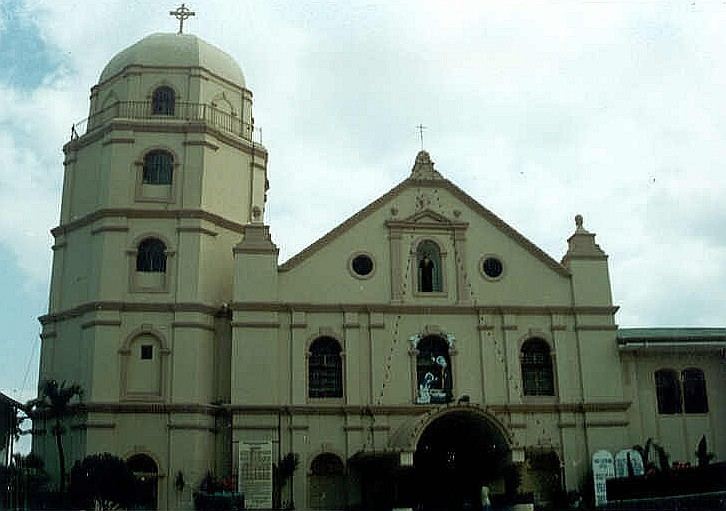Denomination Roman Catholic Functional status Active Phone +63 923 498 0313 | Dedication Saint Paschal Baylon Opened 1754 | |
 | ||
Archdiocese Roman Catholic Archdiocese of Manila Similar Barasoain Church, San Isidro Labrador Church, San Diego de Alcala Church, National Shrine of Saint Anne, National Shrine of the Divin | ||
The Obando Church, also known as the San Pascual de Baylon Parish Church, is a Roman Catholic church located in the municipality of Obando in the province of Bulacan, Philippines. Founded by Franciscan missionaries, under the Spanish flag, it is the venue of the three-day Obando Fertility Rites held annually in honor of three patron saints, namely: St. Pascual Baylon, St. Claire of Assisi and Our Lady of Salambao, a celebration that was mentioned by Jose Rizal, the Philippine national hero, in the pages of his Spanish-language novel, the Noli Me Tangere (in Chapter 6: Captain Tiago). During the month of May, parishioners and other devotees perform the three-day Obando Dance (formerly known as the Kasilonawan, now locally called Sayaw sa Obando, literally "the dance in Obando") inside the church, followed by a street procession.
Contents
Obando church
Structure
Its façade had been described as similar to that of the church of Marilao, Bulacan. The edifice is composed of windows and flat columns, and has a pediment with a niche and two round windows at the sides. The façade is also flanked by an octagonal belltower. Connected to its structure is the Colegio de San Pascual Baylon, a private school managed by the parish. The altar of the church is believed to be gilded with silver.
History
The Obando Church was built by the Franciscan Order, headed by Rev. P. Manuel de Olivencia, the first curate of Obando, on April 29, 1754. The church was destroyed in World War II during the fight for the liberation from the Japanese rule. According to some reports, the original statues of Our Lady of Salambao, Saint Clare and Saint Paschal Baylon were also destroyed during the fighting, and that the images presently venerated are commissioned replication of the original images. The church was rebuilt in 1947 through the efforts of Rev. Fr. Marcos C. Punzal with the help of local Obandeño parishioners.
Other parish priests who also managed the Obando Church since the 1900s include: Rev. Fr. Juan Dilag, Rev. Fr. Padre Exequiel Morelos, Rev. Fr. Ricardo Pulido, Rev. Msgr. Rome R. Fernandez, Rev. Fr. Marcelo K. Sanchez, Rev. Fr. Danilo G. delos Reyes, and Rev. Fr. Avelino A. Sampana. It was Rev. Fr. Rome Fernandez, with the assistance from the Cultural Commission of Obando, who revived the celebration of the Obando Fertility Rites or the Obando Dance in 1972. This was after a prohibition of the practice was imposed by an archbishop of Manila after World War II.
Current status
The Church of Obando has been declared as the "Diocesan Shrine" of the Our Lady of the Immaculate Concepcion of Salambao (the long name for the Our Lady of Salambao) by the Catholic Church. The church is connected to several barangay chapels in Obando, Bulacan, namely: the chapels of Barangays Panghulo, Catanghalan, Pag-asa, Paliwas, San Pascual, Hulo, Mahabang-Lawa (or Lawa), Tawiran, Wawang-Pulo, Liputan, and Ubihan. Two former chapels that now have parochial church statuses include the Santa Cruz Parish in Barangay Paco and the Parish of Nuestra Señora de Salambao (the Parish of Our Lady of Salambao) of Barangay Binuangan. Both are still within the political boundaries of present-day Obando, Bulacan. Thus, there are now three parishes in Obando, Bulacan, each with their own parochial churches: those of Barangays Paco and Binuangan, in addition to the Parish of San Pascual Baylon (the Obando Church). At present the church managed by Rev. Fr. Vergilio Ramos.
